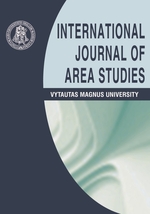Influence of Japonisme on Art of M. K. Čiurlionis and His Contemporaries
Influence of Japonisme on Art of M. K. Čiurlionis and His Contemporaries
Author(s): Yumiko NunokawaSubject(s): Fine Arts / Performing Arts
Published by: Vytauto Didžiojo Universitetas
Keywords: Čiurlionis; Hokusai; Hiroshige; Japonisme; japonaiserie; ukiyo-e.
Summary/Abstract: The aim of this paper is to show how Japonisme was introduced to Europe in the late 19th century and how it influenced artists in major cities. Japanese woodblock prints (ukiyo-e), especially those of Hokusai and Hiroshige, fascinated the Impressionists and other contemporaries such as Claude Monet (1840-1926), Vincent van Gogh (1853-1890), and James Abbott McNeill Whistler (1834-1903). Many of them adopted japonaiserie motifs in their paintings or sculptures, and it formed a major artistic trend called Japonisme. The Lithuanian composer and painter Mikalojus Konstantinas Čiurlionis (1875-1911) was also infl enced by the trend of Japonisme, especially from the paintings of the Impressionists or through artists in Poland. In Poland and Russia, Japanese artworks were imported by artists who had studied abroad, or by wealthy bourgeoisie such as Feliks “Manggha” Jasieński (1861-1929), a Polish collector whose nickname was directly associated with Japonisme, and Sergey Kitaev (1864-1927), an ardent Russian collector of Japanese artworks. In this article, Japonisme in European art in general will be outlined, together with similar tendencies in Čiurlionis’ paintings, and then, examples of Japonisme-infl uenced paintings in Poland and Russia will be briefly shown. Finally, by focusing on Čiurlionis’ paintings, it will be shown how he adopted Japonisme in three stages. In the first stage japonaiserie motifs were only partially borrowed. In the second stage ukiyo-e’s motifs and pictorial schemes were applied to his paintings, and finally, in the third stage of borrowing, expressions of Japanese motifs in his most sublime style will be shown.
Journal: Regioninės studijos
- Issue Year: 2015
- Issue No: 10/1
- Page Range: 85-118
- Page Count: 34

